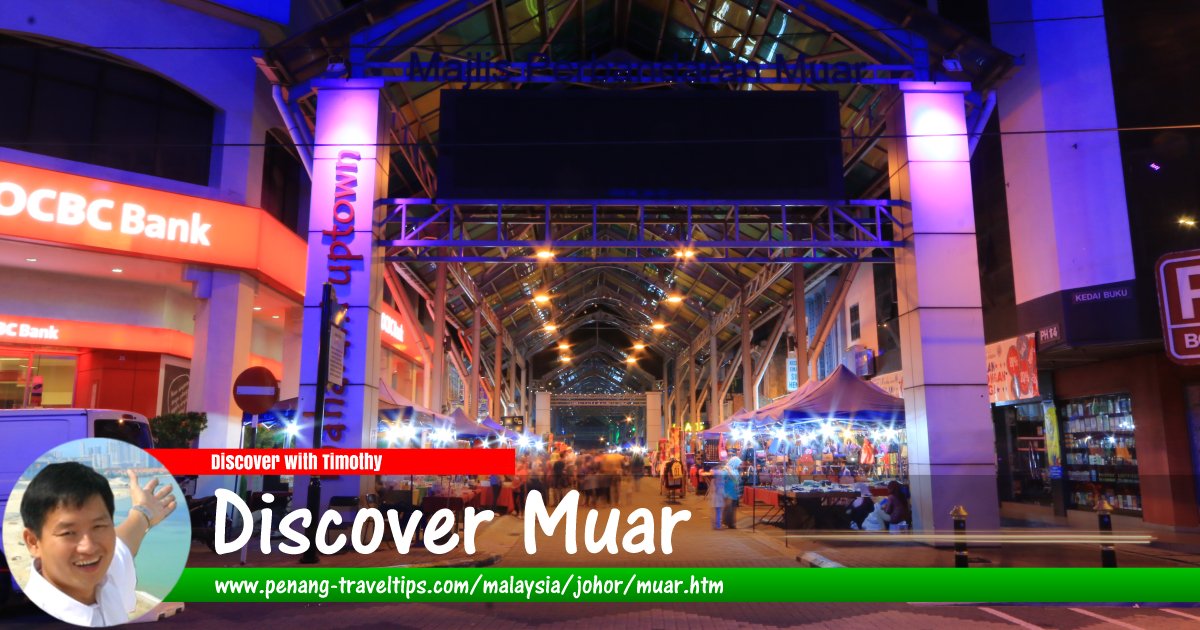 Muar, Johor (11 September, 2016)
Muar, Johor (11 September, 2016)
B. Melayu
Muar (GPS: 2.06361, 102.57659), is a town on the west coast of Johor. It is also the name of the district surrounding it. Sultan Ibrahim Ismail replaced Johor Bahru with Muar as Johor's new royal capital on 5 February, 2012, and on 24 November that same year, he declared it Bandar Maharani Bandar Diraja.
Muar is located on the northwestern part of the state. It is by the bank of Sungai Muar. This somewhat sleepy town has a substantial Chinese population, hence many of the shops in town are Chinese owned. The district of Muar used to cover both Muar Town and Tangkak. But since Tangkak was ungraded to a full district level, called Ledang District, the Muar district is reduced to only the area south of Muar River.
Muar was established in 1885 by local nobleman Dato' Muhammad Salley bin Perang, who is better known as Dato' Bentara Luar.
Map of Muar, Johor
Places of eat in Muar
- Mee Bandung Abu Bakar Hanipah (GPS: 2.04654, 102.56619)

- Muar Soup House (GPS: 2.04543, 102.56636)

- Wang Lye Kopitiam (GPS: 2.04911, 102.57049)

Hotels in Muar
- Elite Hotel (GPS: 2.04252, 102.56512)


- Inn Home Hotel Muar (GPS: 2.04819, 102.56777)


- Muar Traders Hotel (GPS: 2.04632, 102.56341)


- Muarar 99 Hotel (GPS: 2.04918, 102.56992)


Street Art in Muar
- Bangsa Johor Mural (GPS: 2.04671, 102.5551)

- Naomiching Art Installation (GPS: 2.04733, 102.56872)

- The Bond Mural (GPS: 2.04762, 102.57023)

- The Loving Sisters Mural (GPS: 2.04833, 102.57163)

Sights & Shops in Muar
- Dataran Tanjung Emas (GPS: 2.04671, 102.5551)

- Eng Choon Huay Kuan (GPS: 2.04974, 102.56951)

- Eu Yan Sang (GPS: 2.04657, 102.56871)

- Gurdwara Sahib Muar (GPS: 2.04049, 102.56319)

- Hentian Maharani (GPS: 2.04687, 102.56481)

- Hospital Pakar KPJ Bandar Maharani (GPS: 2.0359, 102.56726)

- HSBC Muar (GPS: 2.04591, 102.56341)

- Hui Ann Association (GPS: 2.04816, 102.57141)

- Istana Hinggap Muar (GPS: 2.04613, 102.56039)

- Jin Yit Sze Temple (GPS: 2.03994, 102.56945)

- Kedai Biskut Lee Heng (GPS: 2.04754, 102.56904)

- Kerng Tang Kou Bioh Temple 粤東古廟 (GPS: 2.04919, 102.57085)

- Kheng Jai Wee Kuan Building (GPS: 2.04658, 102.56625)

- Kompleks Lagenda (GPS: 2.04645, 102.56913)

- Kompleks Maharani Riverview (GPS: 2.04849, 102.5672)

- Laman Maharani (GPS: 2.0491, 102.56787)

- KWSP Muar (GPS: 2.04606, 102.56389)

- Living Water Presbyterian Church (GPS: 2.05565, 102.57367)

- Masjid Jamek Sultan Ibrahim (GPS: 2.04639, 102.55838)

- Masjid Sultan Ismail (GPS: 2.05086, 102.56173)

- Medan Selera Tanjung Emas (GPS: 2.04709, 102.55346)

- Muar Clock Tower (GPS: 2.04877, 102.56888)

- Muar Ferry Terminal (GPS: 2.04791, 102.56666)

- Muar Municipal Council (GPS: 2.04711, 102.56539)

- Muar Nan Hai Fei Lai Temple (GPS: 2.04877, 102.56888)

- Muar Royal Customs & Excise Office (GPS: 2.04751, 102.56593)

- Muar Second Bridge (GPS: 2.07711, 102.55402)

- Muar Teochew Association (GPS: 2.04949, 102.56919)

- OCBC Muar (GPS: 2.0469, 102.56565)

- Perhentian Teksi & Kereta Sewa Bandar Maharani (GPS: 2.04653, 102.56388)

- Sai Kee Kopi Serbok Sdn Bhd (GPS: 2.05022, 102.57009)

- Seu Teck Sean Tong (GPS: 2.03536, 102.57066)

- Sekolah Tinggi Muar (GPS: 2.04476, 102.56153)

- Seventh-Day Adventist Church (GPS: 2.04428, 102.56934)

- Sri Muthumariamman Temple (GPS: 2.03994, 102.56303)

- St Andrew's Catholic Church (GPS: 2.05421, 102.57289)

- Stadium Sultan Ibrahim (GPS: 2.03601, 102.56873)

- Sultan Abu Bakar Building (GPS: 2.0461, 102.56194)

- Sultan Ismail Bridge (GPS: 2.05087, 102.56715)

- Taman Tanjung Emas (GPS: 2.0475, 102.55414)

- Tanjung Ketapang (GPS: 2.04637, 102.55041)

- Terminal Bentayan Muar (GPS: 2.05071, 102.5702)

- Tian Chun Tang Temple 天春堂 (GPS: 2.04919, 102.57085)

- Tiān Huì Guān Yīn Táng Temple (GPS: 2.03621, 102.5635)

- Trinity Presbyterian Church (GPS: 2.0502, 102.57225)

- Tugu Mahkota Muar (GPS: 2.04332, 102.56673)

- Wetex Parade (GPS: 2.04389, 102.56653)

Streets in Muar
Here's a list of streets in Muar that I have described on this website.Categories of sights in Muar
Places in the vicinity of Muar Town
- Gunung Ledang Recreational Forest
- Makam Panglima Lidah Hitam (GPS: 2.01554, 102.57498)

- Nam Thien Temple (GPS: 1.98561, 102.6008)

- Pantai Leka (GPS: 1.95124, 102.63495)

- Parit Jawa (GPS: 1.95862, 102.64367)

Rivers in Muar
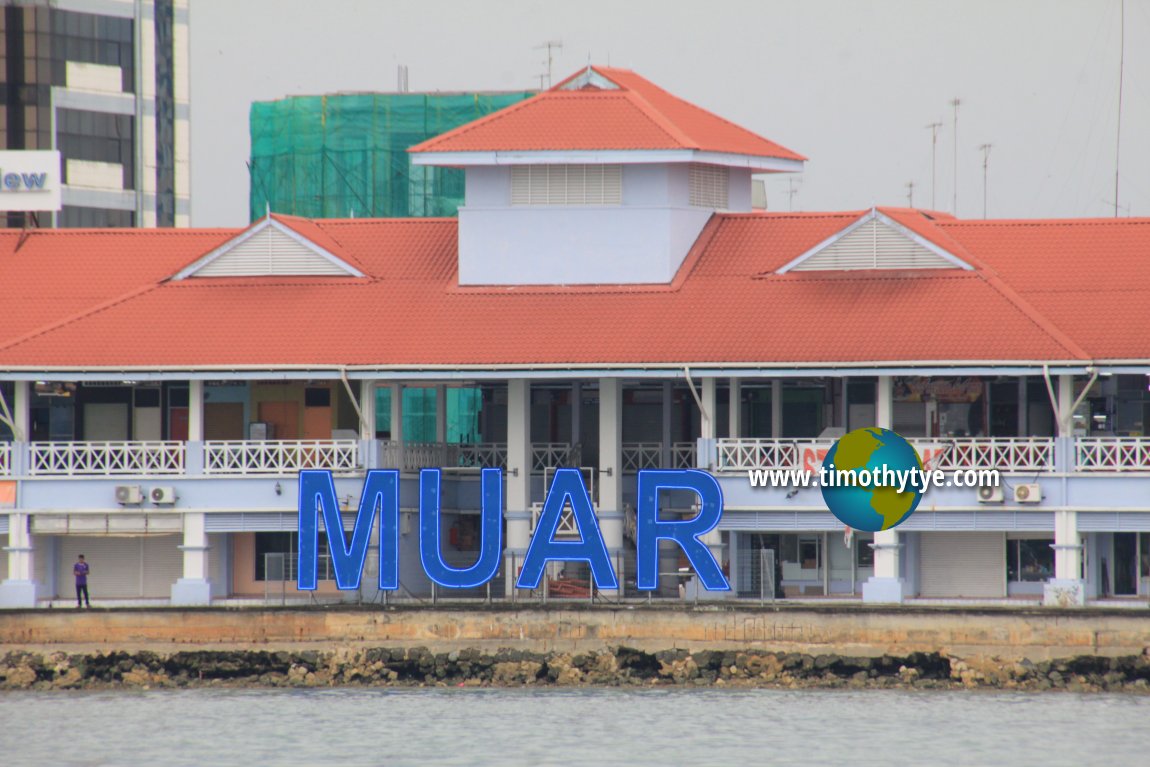 Muar signboard facing the Muar River (11 September, 2016)
Muar signboard facing the Muar River (11 September, 2016)
How to go Muar
By BusYou can catch buses from Johor Bahru (2 1/2 hours) or Kuala Lumpur (2 1/2 hours). Online booking of bus tickets to Muar available at Bus Online Ticket as well as a few other online ticketing companies.
By Car
If you are driving, you should exit the North-South Expressway at Tangkok (Exit 235) if coming from the north, and at Pagoh (Exit 238) if from the south.
History of Muar
Muar is a very old town by Malaysian standard. It is even older than Malacca, having been mentioned as a stopover of Parameswara on his route north, prior to founding Malacca. Parameswara is said to have founded a settlement at Pagoh in upper Muar. It is also in Muar that one can find the only remaining tomb of a Malacca sultan, that of Sultan Alauddin Riayat Shah (1477-1488) which escaped demolition by the Portuguese, a fate that befall the other Malacca sultans' tombs. The Portuguese built a fort in Muar, called the Fortaleza de Muar, to repel attacks from the Dutch and the Acehnese.When the British made Dato' Temenggong Daing Ibrahim the de facto ruler of Johor, the actual ruler, Sultan Ali, ruled over an independent kingdom at Muar called Kesang. Sultan Ali should in fact be ruler over all Johor, but due to his weakness, the Temenggong became instead the de facto ruler. After the death of the Temenggong, the throne of Johor passed to the Temenggong's eldest son, who ascended the throne as Maharaja Abu Bakar and eventually Sultan Abu Bakar.
After the death of Sultan Ali, his eleven-year-old son Tengku Mahmood was chosen as his successor, bypassing the rightful heir, his eldest son Tengku Alam. When Colonel Archibald Anson, the Acting Governor of the Straits Settlements, wanted to put Muar under the control of Maharaja Abu Bakar, Tengku Alam declared war. The conflict came to be known as the Jementeh Civil War. The army of Maharaja Abu Bakar under the leadership of the maharaja's cousin, Ungku Ahmad, an abled tactician, easily defeated Tengku Alam.
As a result of the war, the town of Muar was opened by Maharaja Abu Bakar. It was bestowed the name Bandar Maharani by Maharaja Abu Bakar in 1884, in honour of his consort Maharani Fatimah. The following year, Maharaja Abu Bakar was proclaimed sultan. He reigned for another ten years until his death in 1895.
Muar as a future World Heritage Site
A non profit cultural organisation called Muar Historia is compiling information about the history of Muar with the hope that one day, the town may also be inscribed as a World Heritage Site by UNESCO. Go to the Muar Historia website (alas, as of 29 May 2020, the link has gone offline) to get to know their activities.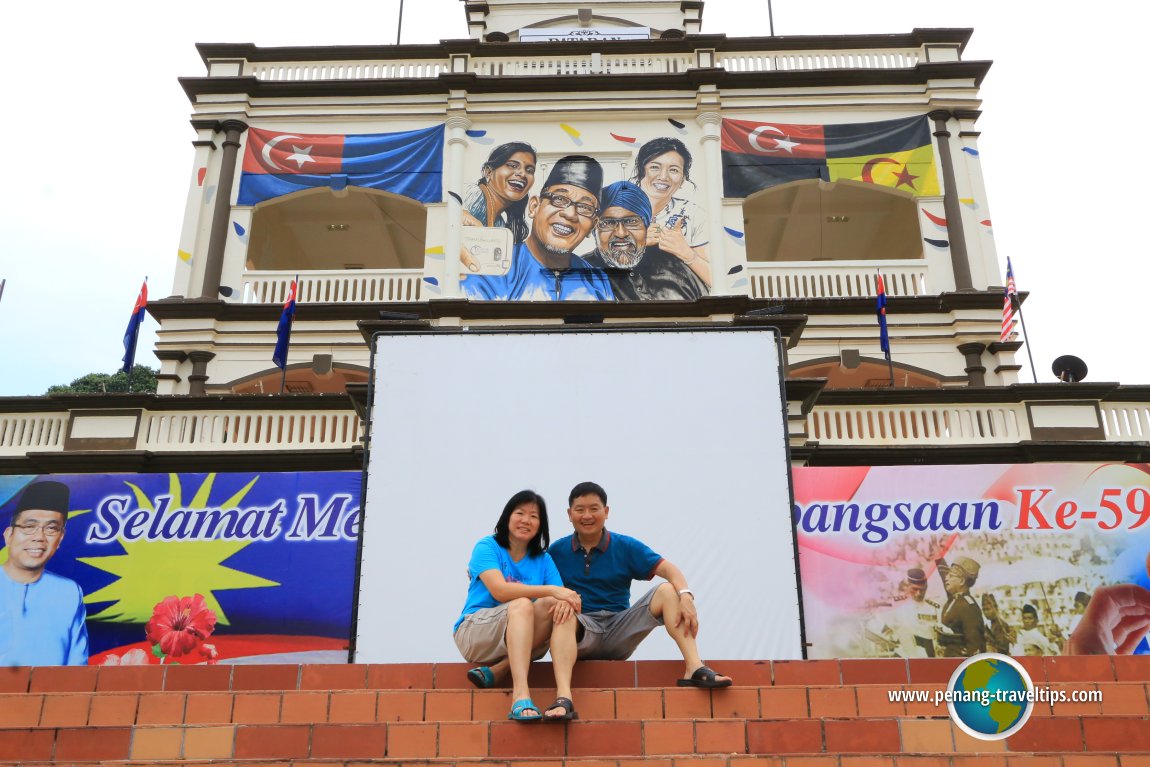 Timothy Tye and Goh Chooi Yoke at the Bangsa Malaysia mural (11 September, 2016)
Timothy Tye and Goh Chooi Yoke at the Bangsa Malaysia mural (11 September, 2016)
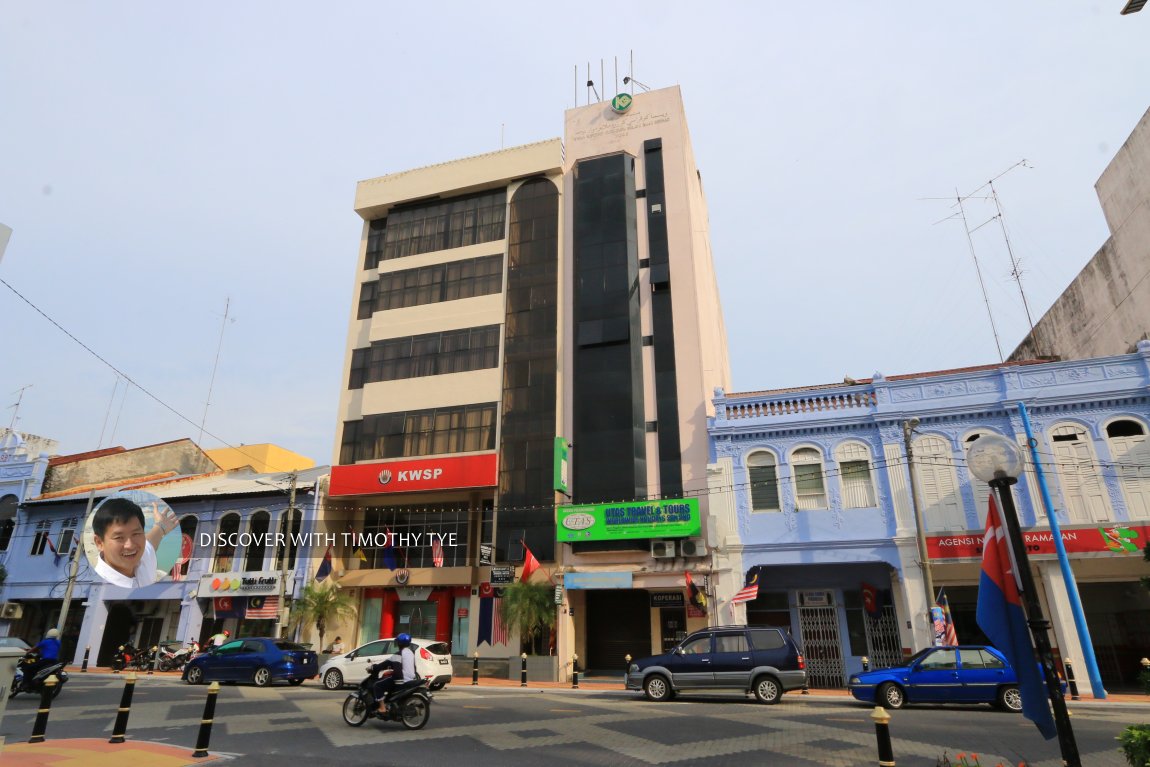 Muar KWSP, 9, Jalan Petrie, 84000 Muar, Johor, Phone: 06-953 9288 (11 September, 2019)
Muar KWSP, 9, Jalan Petrie, 84000 Muar, Johor, Phone: 06-953 9288 (11 September, 2019)
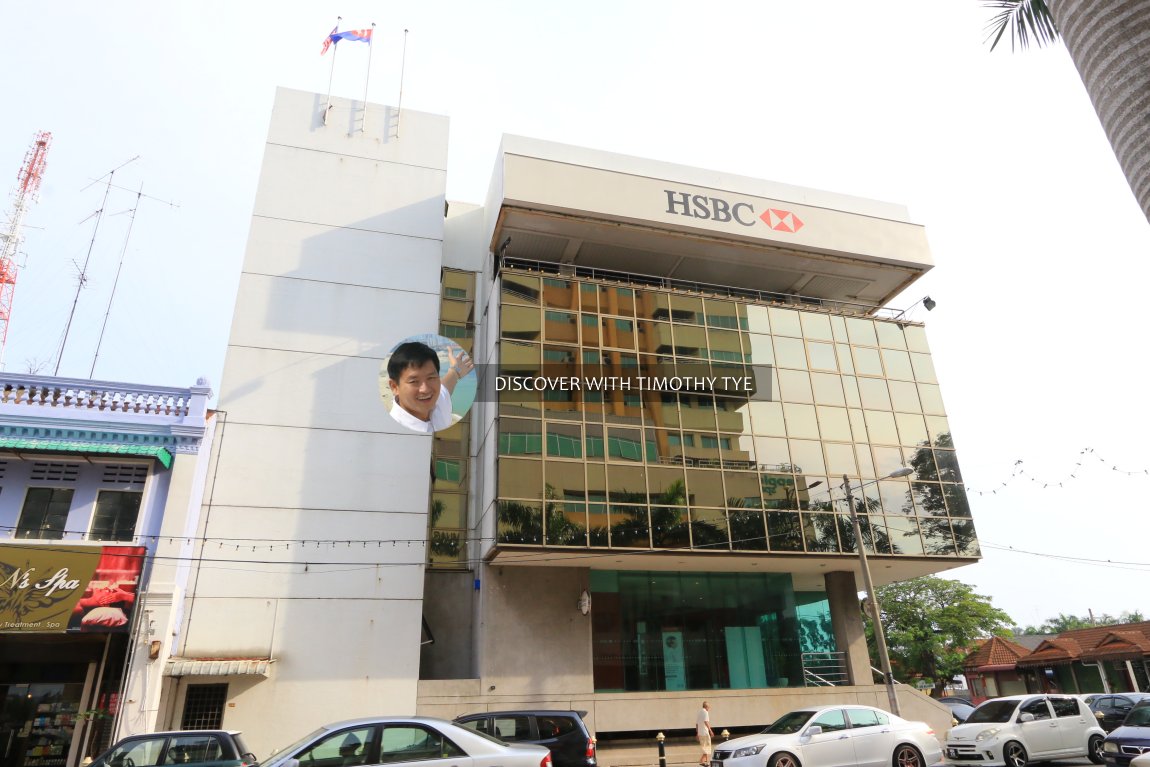 Muar HSBC, 15, Jalan Petrie, 84000 Muar, Johor. (11 September, 2019)
Muar HSBC, 15, Jalan Petrie, 84000 Muar, Johor. (11 September, 2019)
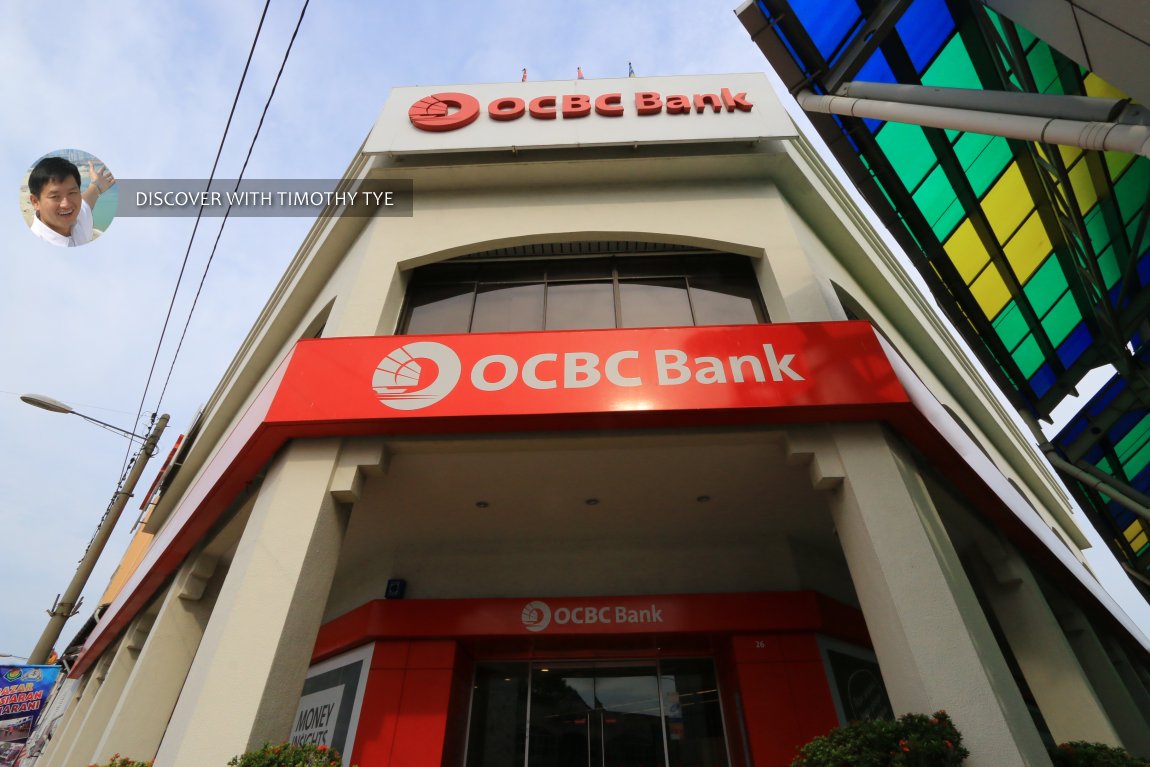 OCBC, Muar, 26, Jalan Maharani, 84000 Muar, Johor. (11 September, 2016)
OCBC, Muar, 26, Jalan Maharani, 84000 Muar, Johor. (11 September, 2016)
360° View of Muar on Google Maps Street View
Muar is  on the Map of Johor
on the Map of Johor
References
- Wikipedia: Ibrahim Ismail of Johor
Back to Johor mainpage; List of Towns in Johor and Towns in Malaysia
 Latest updates on Penang Travel Tips
Latest updates on Penang Travel Tips
Songs about Penang
About this website

Hello and thanks for reading this page. My name is Timothy and my hobby is in describing places so that I can share the information with the general public. My website has become the go to site for a lot of people including students, teachers, journalists, etc. whenever they seek information on places, particularly those in Malaysia and Singapore. I have been doing this since 5 January 2003, for over twenty years already. You can read about me at Discover Timothy. By now I have compiled information on thousands of places, mostly in Peninsular Malaysia and Singapore, and I continue to add more almost every day. My goal is to describe every street in every town in Malaysia and Singapore.
Copyright © 2003-2024 Timothy Tye. All Rights Reserved.


 Go Back
Go Back